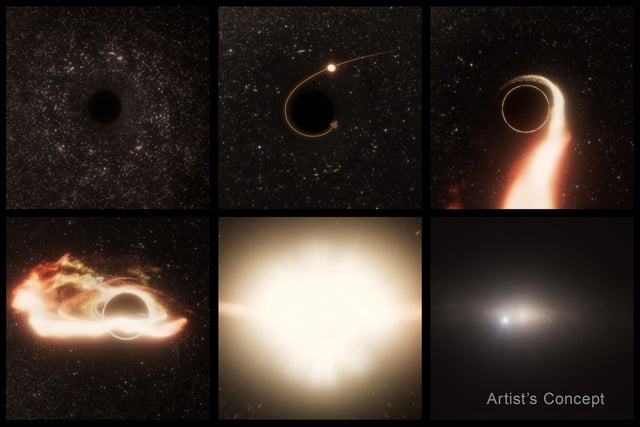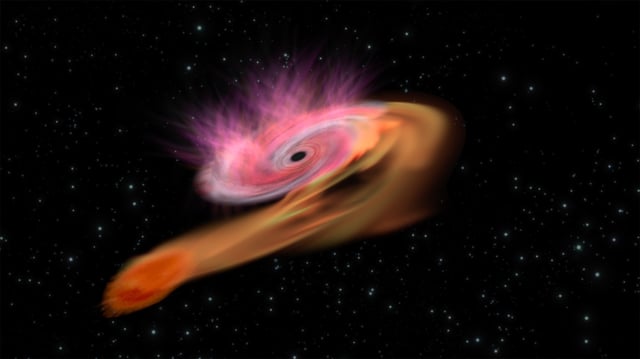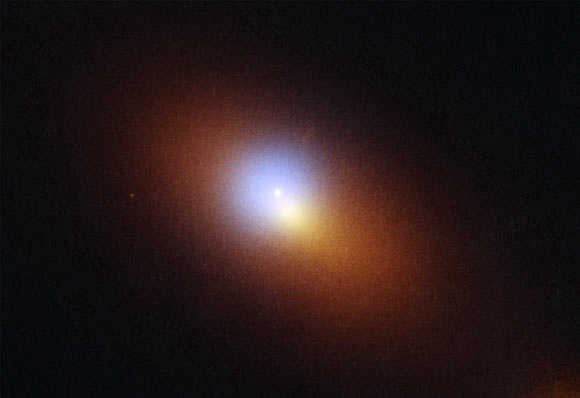Overview
- The tidal disruption event AT2024tvd was observed 2,600 light-years from its host galaxy's nucleus, confirming the presence of a roaming supermassive black hole.
- Multi-wavelength observations from Hubble, Chandra, and the NRAO Very Large Array established the black hole's mass at one million solar masses, distinct from the 100-million-solar-mass central black hole of the galaxy.
- This is the first offset tidal disruption event identified among approximately 100 recorded, opening new possibilities for detecting elusive wandering black holes.
- The event was first detected as a supernova-like flare by the Zwicky Transient Facility, with follow-up imaging pinpointing the black hole's precise location.
- Theories suggest the black hole may have been displaced by a three-body interaction or is a remnant of a past galaxy merger, though its exact origin remains uncertain.


